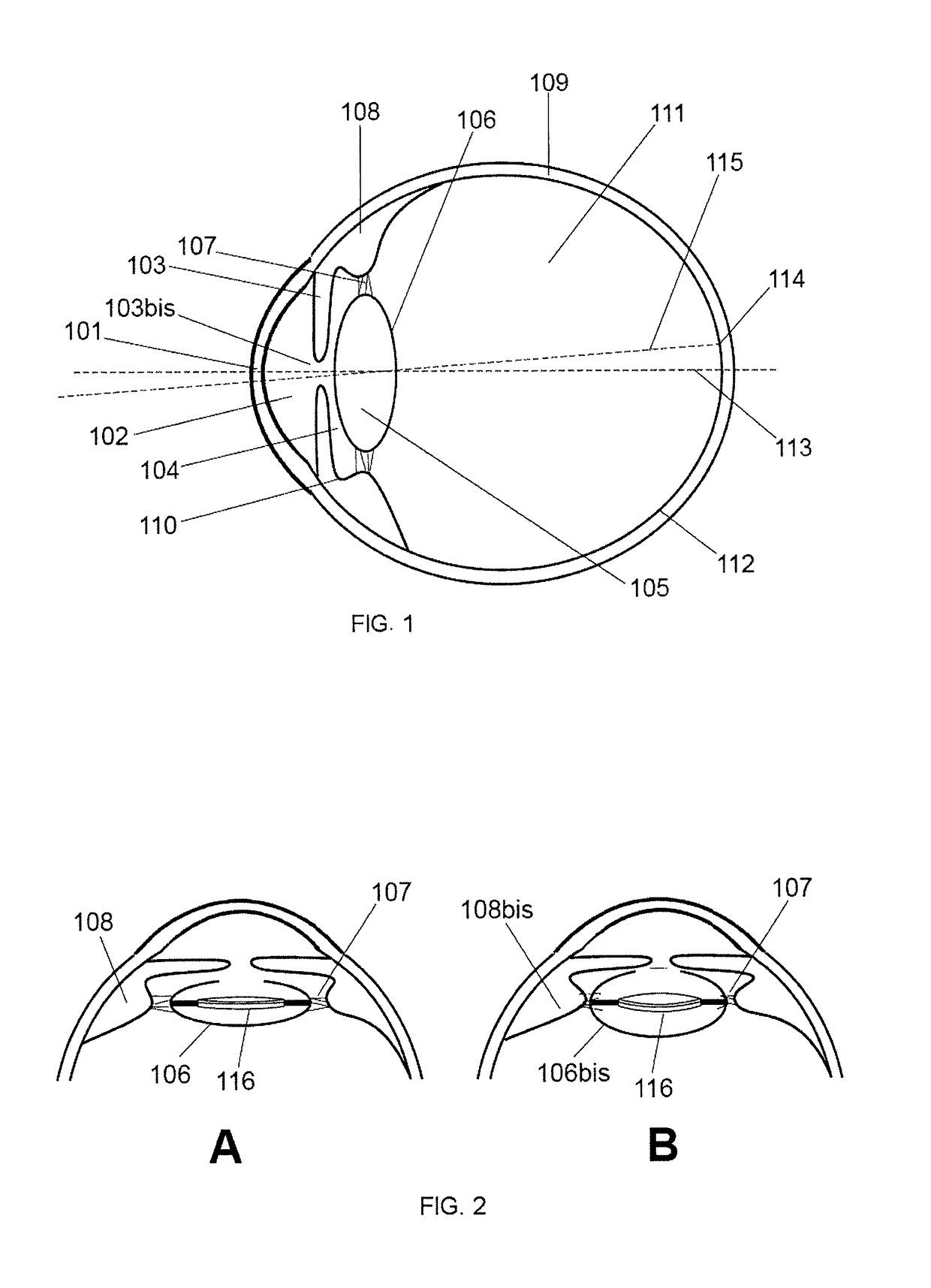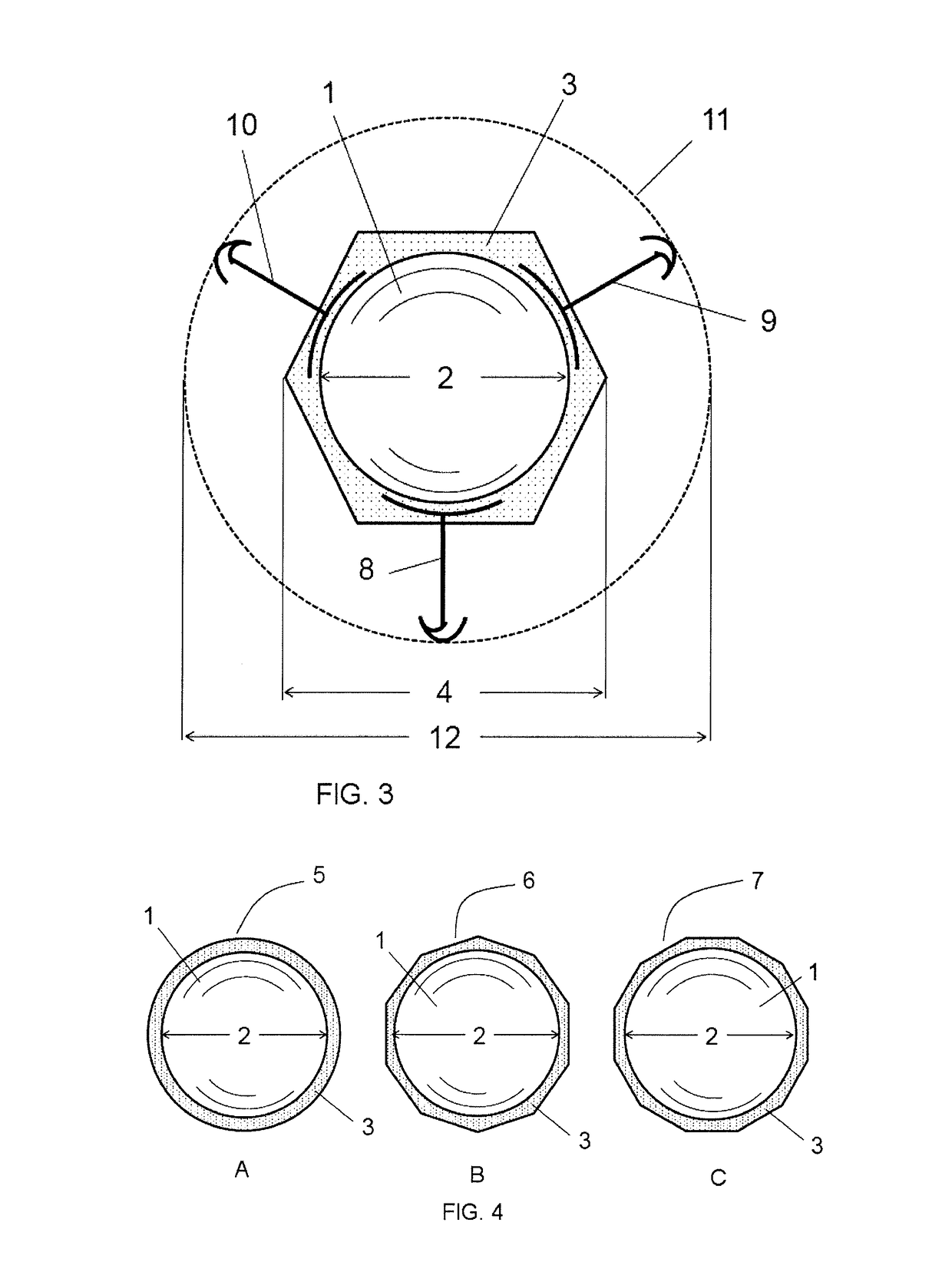Variable-power accommodative intraocular lens and assembly of variablepower accommodative intraocular lens and capsular ring
a technology of which is applied in the field of accommodative intraocular lens and variable-power accommodative intraocular lens and capsular ring assembly, can solve the problems of small loss of muscle strength, need for more post-operative follow-up of patients, and inability to adapt to progressively weakening with age, so as to reduce the diameter of the capsular ring and increase its power
- Summary
- Abstract
- Description
- Claims
- Application Information
AI Technical Summary
Benefits of technology
Problems solved by technology
Method used
Image
Examples
Embodiment Construction
[0085]The present invention consists in a lens and its corresponding haptics designed for its implantation in human eyes. Its purpose is to replace the natural crystalline lens, especially in those situations in which the it does not fulfil its physiological functions correctly. This may happen basically for three causes, which are explained as follows: lack of transparency; incapacity of the crystalline lens to change its power or refractive power in the accommodation of the vision to different distances; an inadequate optical power along the axial length of the full eye. This latter is the cause of ametropias in the vision of the patient, such as myopia, hyperopia or astigmatism when they are considered powers dependent on the meridian.
[0086]For the purpose of facilitating the understanding of the invention, FIG. 1 shows the schematic shape of the fundamental portions that comprise the human eye by means of a horizontal section of it. Specifically, said figure presents those parts...
PUM
 Login to View More
Login to View More Abstract
Description
Claims
Application Information
 Login to View More
Login to View More - R&D
- Intellectual Property
- Life Sciences
- Materials
- Tech Scout
- Unparalleled Data Quality
- Higher Quality Content
- 60% Fewer Hallucinations
Browse by: Latest US Patents, China's latest patents, Technical Efficacy Thesaurus, Application Domain, Technology Topic, Popular Technical Reports.
© 2025 PatSnap. All rights reserved.Legal|Privacy policy|Modern Slavery Act Transparency Statement|Sitemap|About US| Contact US: help@patsnap.com



